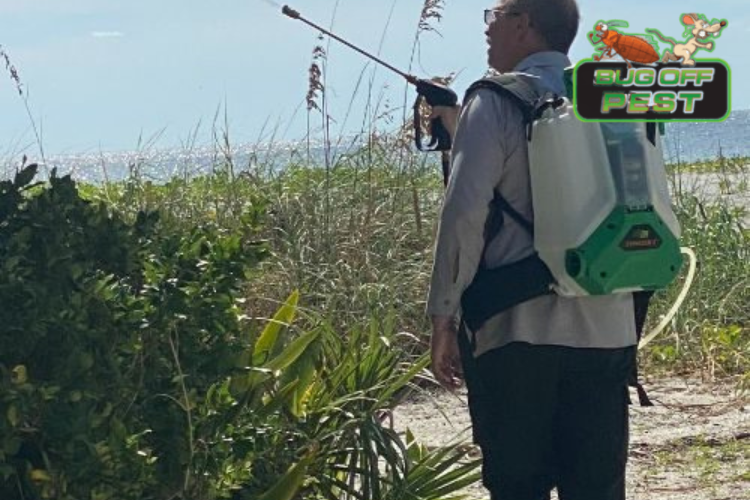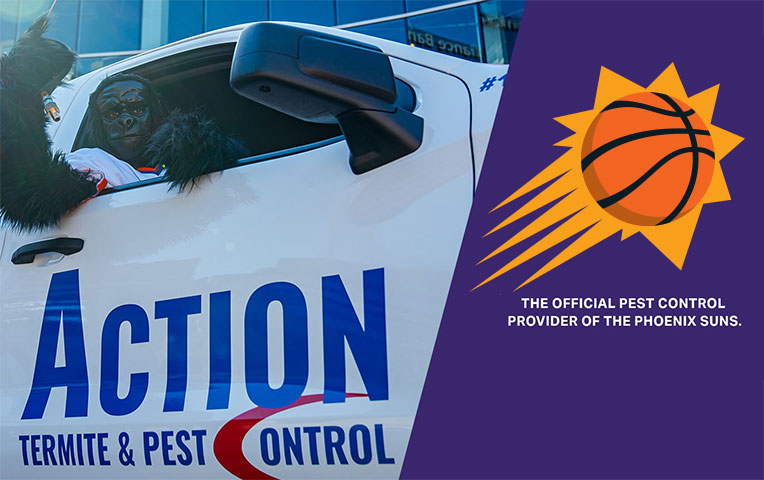Learn Concerning the current Advances in Insect Control and Just How to Execute Efficient Therapy Solutions
In the last few years, the area of parasite control has actually observed substantial advancements, driven by the need for lasting and effective therapy remedies. Cutting-edge strategies such as Integrated Parasite Management (IPM) combine environmentally friendly experiment advanced technology, improving both effectiveness and environmental duty. In addition, the combination of wise technologies and do it yourself techniques has encouraged individuals to deal with pest concerns better. As we discover these advancements, it becomes essential to recognize exactly how ideal to apply these approaches in numerous settings to achieve optimum outcomes. The implications for bug management techniques might be transformative.
Eco-Friendly Pest Control Options
Recently, the need for eco-friendly insect control choices has actually risen as homeowners and services alike look for lasting alternatives to conventional chemical treatments. This shift is driven by growing environmental understanding and a need to reduce the health and wellness threats related to synthetic pesticides.

Eco-friendly parasite control approaches encompass a variety of techniques that prioritize using all-natural substances and techniques. Integrated Parasite Administration (IPM) is one such approach, integrating biological, cultural, and mechanical methods to handle parasite populations while lowering reliance on chemicals (Wildlife removal services). This all natural method stresses prevention via habitat adjustment and the introduction of all-natural killers, thus promoting a well balanced ecological community
Another popular option is making use of agricultural chemicals stemmed from plants, which tend to be much less unsafe to non-target microorganisms. Products like neem oil and diatomaceous earth have obtained grip for their efficiency in managing bugs while positioning minimal dangers to human health and wellness and the environment.
Furthermore, exclusion strategies, such as securing entrance points and keeping tidiness, play a critical role in eco-friendly bug monitoring. By adopting these sustainable methods, people and companies can successfully manage insects while advertising a much healthier planet for future generations.
Smart Innovation in Pest Administration
Development is improving the landscape of bug monitoring, with wise modern technology emerging as an essential force in improving performance and efficiency - Wildlife removal services. The integration of Internet of Points (IoT) devices, artificial knowledge (AI), and information analytics is changing just how parasite control experts approach invasions
Smart traps furnished with sensors can identify bug activity in real-time, sending immediate signals to drivers. This enables timely responses, minimizing damages and lowering the demand for extensive treatments. Additionally, AI algorithms analyze historic data to predict parasite habits, allowing aggressive treatments based on environmental conditions and problem patterns.
Drones and computerized automobiles are also playing a considerable function in pest monitoring, giving airborne assessments of huge areas, determining hotspots, and also dispersing targeted therapies. These modern technologies not only streamline operations but also enhance safety by limiting human exposure to potentially damaging chemicals.
Moreover, mobile applications empower consumers to monitor bug activity and gain access to specialist suggestions, promoting a joint method to pest monitoring. Overall, the adoption of clever technology is setting a brand-new criterion in insect control, stressing data-driven decisions and lasting practices that ultimately profit both home owners and professionals alike.
Integrated Bug Monitoring Techniques
Integrated Bug Monitoring (IPM) employs an alternative strategy to pest control, incorporating various methods to properly manage insect populaces while decreasing risks to human health and the atmosphere. IPM focuses on comprehending the pest life process, their all-natural adversaries, and the community in which they prosper.
Among the basic components of IPM is checking pest populations with normal evaluations and information collection. This enables the identification of bug limits, establishing when intervention is essential. Cultural techniques, such as crop rotation, habitat, and hygiene control, are important in minimizing pest frequency and promoting plant health.
Mechanical controls, including catches and barriers, are also essential in IPM. These techniques can physically remove or hinder bugs without the use of chemicals. When required, the judicious application of chemical controls is used, concentrating on targeted treatments that decrease ecological effect.
Education and cooperation among stakeholders, including farmers, parasite control experts, and the community, are essential for the successful execution of IPM approaches. By focusing on sustainable practices, IPM not just addresses pest problems but also cultivates a healthier community.
Biological Control Approaches
Countless biological control approaches are progressively acknowledged for their effectiveness in taking care of insect populaces while promoting eco-friendly balance. These methods harness natural predators, bloodsuckers, and pathogens to minimize pest numbers without relying upon synthetic chemicals. The introduction of ladybugs can successfully regulate aphid populations, while nematodes target soil-dwelling bug larvae.
In addition, using microbial chemicals, such as Bacillus thuringiensis (Bt), gives an environmentally pleasant choice for handling caterpillar parasites. These products particularly target pest varieties, reducing injury to valuable bugs and pollinators. Conservation biological control emphasizes boosting habitats for all-natural opponents, such as birds and valuable bugs, thereby urging their presence in agricultural systems.
Research proceeds to reveal ingenious techniques within this field, such as making use of scents to wasp removal interfere with pest breeding patterns or the development of biocontrol representatives through genetic modification. Executing these techniques can lead to lasting pest management techniques that mitigate the reliance on chemical interventions, eventually promoting much healthier ecosystems. As awareness of these methods expands, they are becoming essential components of integrated bug management (IPM) strategies, supplying a balance in between efficient pest control and environmental stewardship.
Do It Yourself Parasite Control Solutions
As home owners look for efficient ways to take on insect issues, DIY bug control remedies have gotten appeal for their access and cost-effectiveness. These methods empower people to deal with invasions using easily available materials and techniques, usually without the need for specialist treatment.

In addition, preserving appropriate sanitation and routine inspections can avoid parasite entry and nesting (Wildlife removal services). Basic practices, such as securing splits, removing food sources, and decluttering, can significantly diminish parasite populations. Traps, both homemade and commercially readily available, can also offer reliable options for tracking and controlling certain bugs like rodents or pests

Verdict
The assimilation of environment-friendly insect control options, smart technology, and innovative administration techniques provides a thorough approach to effective pest monitoring. By accepting Integrated Pest Administration (IPM) and utilizing organic control methods, together with DIY options, accountable and lasting insect control can be attained. These developments not just enhance the effectiveness of pest administration techniques however also contribute to a much healthier environment. Applying these methods promotes a balanced ecosystem while properly pest extermination service dealing with pest populaces.
Green parasite control methods encompass a range of methods that focus on the usage of natural substances and techniques. Integrated Pest Administration (IPM) is one such technique, incorporating organic, cultural, and mechanical techniques to manage pest populations while reducing reliance on chemicals. As understanding of these methods grows, they are becoming important elements of incorporated bug monitoring (IPM) approaches, using an equilibrium in between efficient insect control and environmental stewardship.
The integration of eco-friendly pest control options, smart technology, and innovative management approaches offers a thorough technique to efficient insect administration. By embracing Integrated Pest Management (IPM) and using biological control techniques, together with DIY services, sustainable and responsible pest control can be attained.